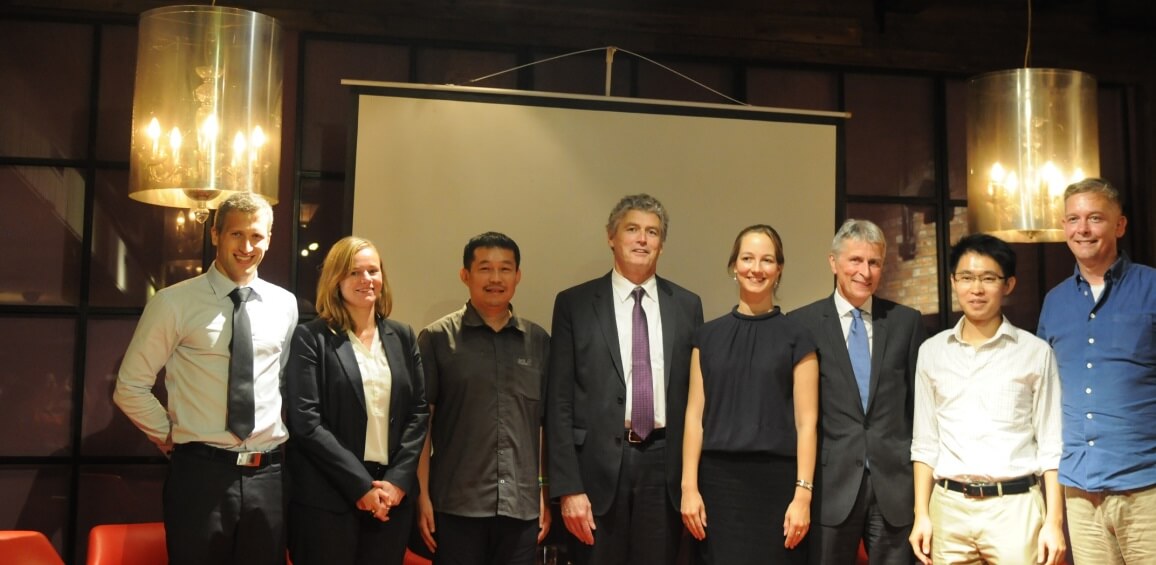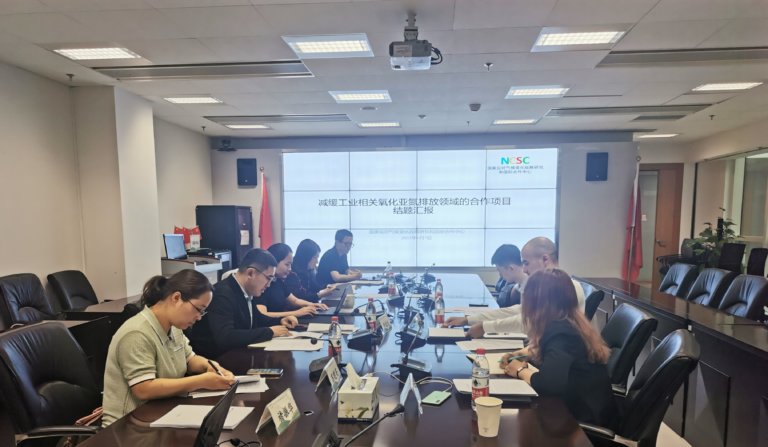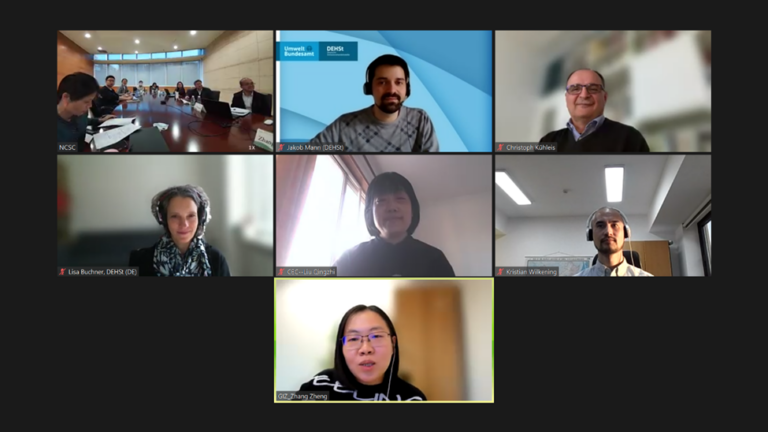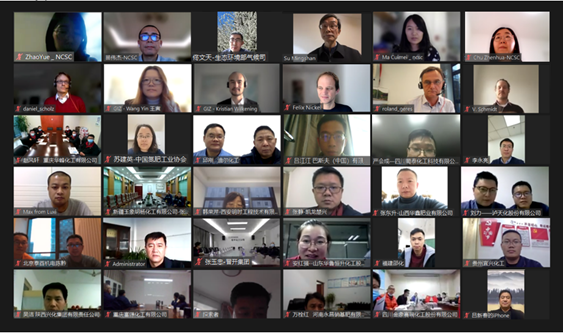On July 26, 2016, the “Role of ETS in Supporting NDC Implementation” event took place in Beijing, which is part of the China Low Carbon Leadership Network (LCLN), an event series jointly organized by Deutsche Gesellschaft für Internationale Zusammenarbeit GmbH (GIZ) and China Carbon Forum (CCF). The panel included distinguished experts from academia, media, NGOs, government representatives, as well as the International Carbon Action Partnership (ICAP), who shared their views on the latest development of China’s national carbon market and implications for its NDC. As the speakers came from both Chinese and international backgrounds, the audience were enabled to gain an insight into a broad range of perspectives, especially during Q&A sessions. After the discussion, the guests enjoyed the follow-up networking event.

China’s development of regional and national carbon markets is significant both due to its status as the world’s largest emitter of greenhouse gases (GHGs), and in the context of the industrial transformation that is being led by the Chinese government. China will launch a national emissions trading system in 2017, building on over ten years of experience in carbon markets, initially through the Clean Development Mechanism (CDM) and more recently through its seven regional pilot carbon markets. China’s national carbon market is likely to face challenges including: ensuring compliance and enforcement and applying uniform rules on monitoring, reporting, and verification (MRV) across the country.
The presence of a Chinese national carbon market will also have major implications for climate policymaking around the world and will substantially shape the status quo of current carbon markets. The presence of a national carbon market in China has the potential scale up climate action, for example by incentivising other countries to implement carbon pricing policies, scaling up ambition in existing schemes, and encouraging further carbon market cooperation. If China’s experience with carbon markets is shared, it may enable other countries to more efficiently meet their nationally determined contribution (NDC) targets. China’s active participation in global carbon markets, however, would require that its market is designed in such a way that it can be sufficiently harmonised with other systems in the future. The compromises need for this to happen, however, may not suit China’s particular circumstances. Such considerations will need to be dealt with by policymakers over the coming year.
Speakers:
- Welcome by Joachim Prey, Director General of the Asia, Latin America and Caribbean Department, GIZ
- Keynote speech by Marc Allessie, Co-Chair of the International Carbon Action Partnership, Steering Committee Director & Director, Dutch Emissions Authority (NEa)
- International perspective presented by Constanze Haug, Head of Secretariat, ICAP
- Academic perspective presented by Teng Fei, Associate Professor, Institute of Energy, Environment and Economy, Tsinghua University
- Media perspective presented by Stian Reklev, Carbon Pulse Co-founder
- NGO perspective presented by Mr. Li Shuo, Global Policy Adviser for Greenpeace East Asia
- Moderated by Constanze Böning, Project Director, GIZ
The following is an edited synthesis of the discussion. As per convention, individual’s comments are not attributed.
Mr. Prey, Director General of the Asia, Latin America and Caribbean Department, GIZ
Mr. Allessie, Co-Chair of the ICAP, Steering Committee Director & Director & Dutch Emissions Authority (NEa)
This event was the 22nd Low Carbon Leadership Network event, organised jointly between GIZ and the CCF, in partnership with the International Carbon Action Partnership (ICAP). Looking at the development of carbon markets in China and the Paris Agreement, the topic for this event is of high relevance. The Paris Agreement marked a turning point for the international climate negotiations and provided momentum for helping the world limit global warming to within 2 degrees Celsius.
The Intended Nationally Determined Contributions (INDCs) showcase what countries are doing to reduce emissions and adapt to climate change across many sectors, including shifting to renewable energy, improvements in energy efficiency, better land management, urban planning, and transport. It is essential that governments translate the NDCs in to specific policies and measures. Domestic and international carbon markets are one instrument which can be used to achieve these goals, and even raise ambition, as laid out in Article 6 of the Paris Agreement. The Agreement also emphasises the importance of international cooperation for reaching its goals. This includes supporting developing countries in reaching their objectives by providing financial, technical and capacity building support. The panel noted the importance of the fact the Paris Agreement text included the section on carbon markets (previously under some doubt). While countries that intended to use carbon markets for achieving their goals would probably have done so anyway, the provision of UN oversight of this process is important and will encourage further discussion of the role of carbon markets in future UN discussions.
The panel noted that the success of the Paris Agreement very much depends on the implementation of the NDC’s, making it a ‘bottom-up’ approach to achieving emissions goals. This helps the UN process to move from a zero-sum game to a cooperative process. However there are a lot of challenges in order to make this effective in achieving the 2 degree target. There is a still a large gap between the existing NDC’s and the emissions budget required to meet the target. China presented its INDC well before the Paris meeting, indicating that the leadership wanted the negotiations to be successful.
Another challenge relates to how ETS will interact with other policies. China does not have a lack of policy in the energy sector, especially in relation to energy efficiency and encouragement of renewable energy. The government will have a difficult job managing the interaction of these policies in the future, and sometimes the interactions may be positive, but sometimes they may also be negative. From a theoretical perspective, this is interesting. With multiple policies implemented in the same sector, one may think that they will be additive, but in fact that is usually not the case. In fact, the most stringent policy will likely have close to full effect, while others may be rendered ineffective. The panel suggested that it is important for policymakers to have a better understanding of these interactions, especially any potential negative effects.
A further challenge relates to competitiveness. Given that China will have the largest market, which makes issues around carbon leakage particularly important. Previously this had only been a concern for China internally, between ETS pilot regions and non-pilot regions. Next year, after the start of the national ETS, there may be concerns around carbon leakage to other countries. This will be addressed by free allocation and other instruments. The panel noted that must be done very carefully and based on detailed analysis. An over-allocation of free permits would lead to subsidisation of those industries and may create some other policy concerns.
Dynamic policy making is also important. The NDC will be updated every five years, based on the ‘ratchet-up’ mechanism within the Paris Agreement known as the ‘global stocktake’. ETS will certainly help countries like China improve the cost effectiveness of the achievement of their emissions goals, and also to respond to changes in the global effort towards carbon pricing, possibly through linking at a later date.
The panel noted that in the early stages of China’s ETS development, a very important task will be creating trust in the market and the institutions which manage it. In this regard it is encouraging that China’s national ETS will base its allocation mechanism at least in part on benchmarking in the initial stage. This is apparently based on lessons from international best practice. Ideally, auctioning would also be introduced at the beginning, even if for a very small share of the overall allowances. This would help to visibly show some of the benefits of ETS, and then to create momentum for this share to gradually increase, with a consequent effect on the price of carbon.
It was also discussed that the role of ETS in emissions reduction in relation to other processes going on in the energy sector as a whole. While ETS is a cost-effective tool for emissions reduction, and may play a significant role in the medium to long -term in delivering emission reductions, probably the largest gains in the coming few years will occur due to the industrial restricting which China’s economy is undergoing, particularly in the coal sector. Since 2013 China’s coal consumption has been declining, and this decline has probably increased this year. The huge contribution of China’s coal sector to emissions in China, and indeed the world, mean that any structural change in that sector is of major significance. For example, China’s 2020 emissions intensity target, announced prior to the Copenhagen UNFCCC meeting, will be over-achieved largely due to the changes in the coal sector.
At the same time, ETS has a very important role to play in the short term, more for the process rather the emissions outcome. This is particularly the case in relation to MRV, where provinces and enterprises are obligated to better account for their emissions. The very fact that the issue of climate change is now on the agenda of local governments is largely due to the ETS exercise. The importance of this institutional momentum should not be overlooked.
ETS also reflects the central government’s larger goal of moving away from blunt policy instruments such as administrative measures, and towards more market-based tools such as carbon markets. Such measures are more flexible and should in theory better reflect the situation of the Chinese economy. At the same time, the central government should ensure that the process is coordinated effectively as possible, for example that provinces use the same methodology for emissions accounting, and that the cap is stringent enough, avoiding the problems created by over-allocation in the EU ETS.



